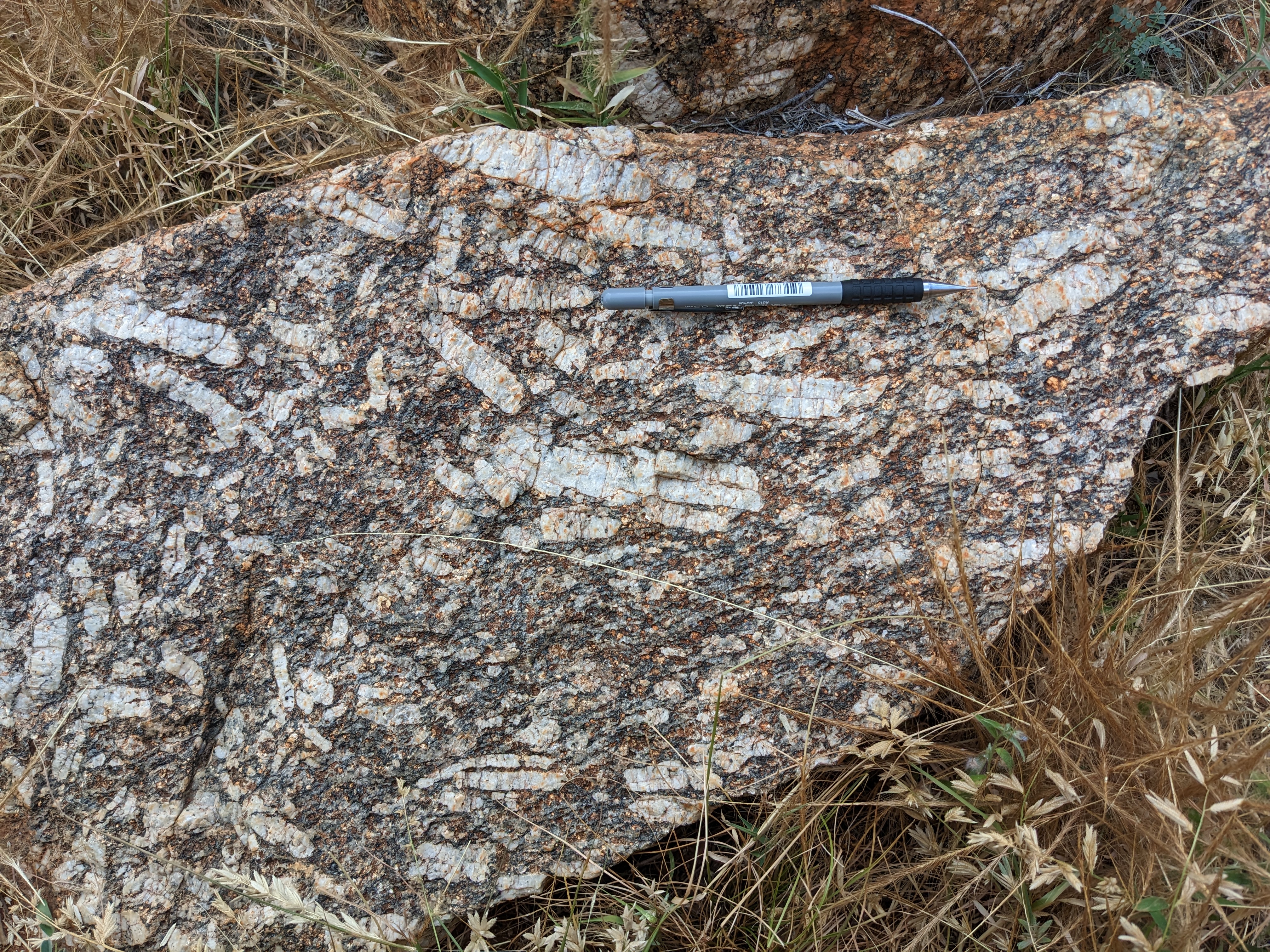This project commenced in March 2023 with the explicit aim of developing a robust litho-chemical-mineralisation framework for the critical mineral (both LCT and NYF) bearing pegmatites within the Aileron pegmatite province of the Northern Territory. A combined mineralogical, geochemical, and isotopic investigation to decipher the origin of these pegmatites is vital as it will facilitate the development of a mineral systems approach to critical mineral pegmatite exploration, enabling the cost-effective targeting of fertile granites within the Aileron Province pegmatite fields.
The initial fieldwork stint for this project was recently undertaken between April 10-24th, 2023 and focused on the LCT bearing pegmatites of the Bismark Prospect situated on Anningie Station approximately 80 km northwest of Ti Tree, NT. Pegmatites, both mineralised (Fig. 2) and unmineralized, were systematically sampled from across multiple localities at Bismark Prospect, along with a wide variety of “type” localities of the Esther Granite (Fig. 3), the main granitic body in the region and purported parent to the LCT pegmatites. Initial field observations are promising, with many of the pegmatites containing apparent spodumene (Fig. 2) and cassiterite in hand samples, demonstrating economic mineralisation in the area.
The ~30 samples collected during this initial stage of fieldwork (Fig. 4) will form the basis of our work in the Anningie pegmatite field. A combined mineralogical, geochemical, and isotopic analysis of these samples will provide key data in understanding the overall petrogenesis of these critical mineral pegmatites, as well as the mineral hosts of lithium and how this is distributed in the pegmatites and host rocks. Importantly, the isotopic tracers (e.g., U-Pb, Hf, O, and Nd) used on accessory minerals (zircon, apatite, and cassiterite) will help to fingerprint the fertile granitic source rock, presumably the Esther Granite, noting that there are several phases of this. This newly acquired data will be integrated with existing structural data for the region to provide a complete view of the rare metal mineralisation process in the Aileron Province pegmatites. Collectively, this data will be used to constrain parameters for exploration, providing a cost-effective exploration methodology for critical mineral pegmatites throughout the Arunta pegmatite province.
In the coming months, these samples from Bismark Prospect will be processed for petrographic, geochemical, and isotopic analysis. Additional fieldwork will be conducted later this year to obtain structural measurements at Bismark Prospect to help constrain the tectonic evolution. Additionally, critical mineral pegmatites of the neighbouring Barrow Creek pegmatite field (~90 km north of Ti Tree, NT) are another high priority area for investigation.
Jack Stirling has been a long-time resident of the School of Earth Sciences and Centre for Exploration Targeting, having undertaken his Bachelor of Science (Honours), Master of Science, and PhD at the University of Western Australia. Much of his work has centred on understanding the production, evolution, and growth of continental crust (granite petrogenesis) in subduction-related island arc settings. He has extensive experience in high-precision ID-TIMS U-Pb geochronology and several in-situ (SHRIMP, SIMS, and LA-ICPMS) methods on accessory minerals (zircon, apatite, allanite, and titanite) where he uses multiple isotopic tracers (U-Pb, Lu-Hf, Sm-Nd and O) to constrain the petrogenesis of subduction-related arc granites and their relationship to crustal growth processes.
Figure 1. Bismark Prospect field area Anningie Station, NT. Pegmatite outcrop situated in bottom right of field photograph
Figure 2. Large (~10cm) grey spodumene crystal from Bismark (North) demonstrating good 90° cleavages.
Figure 3. Elongate K-feldspars in the Esther Granite.
Figure 4. Samples collected during fieldwork packaged for shipping to UWA. Three additional pail buckets and two 25L storage tubs are situated on the back seats.






